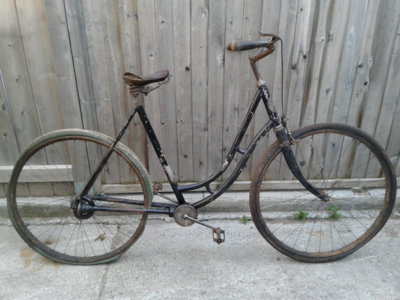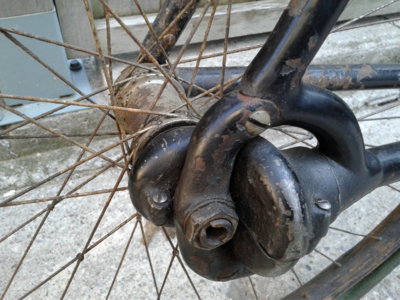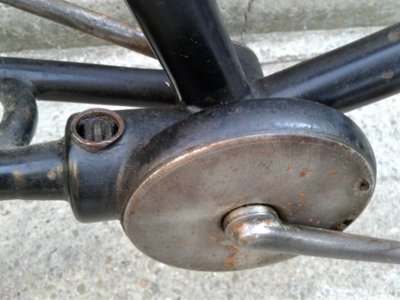Brian R.
Wore out three sets of tires already!
I bought this bike recently. The badge says Model 50 but I believe that number was for a mens bike. Also there appears to be a ghost image of a taller badge. It has the "trophy fork" so that means it's 1898-1899, right? It still has all its ball-end spokes. I thought the hub would be a fixie and was surprised to find it has a freewheel, which I found puzzling because there's no evidence of an original spoon brake. After a closer look I'm now wondering if it has a coaster brake that's not working. I see no evidence (like bolt holes for example) that it originally had a rear fender.
So here are my questions: 1. Which year and model is it? 2. What's going on with the freewheel and lack of period correct brake? 3. Did it originally have a rear fender?
Thanks,
-B




So here are my questions: 1. Which year and model is it? 2. What's going on with the freewheel and lack of period correct brake? 3. Did it originally have a rear fender?
Thanks,
-B






















